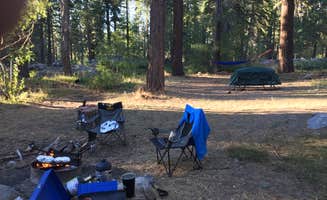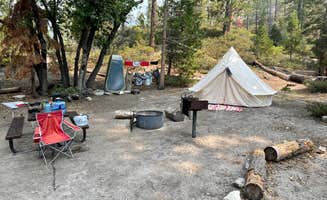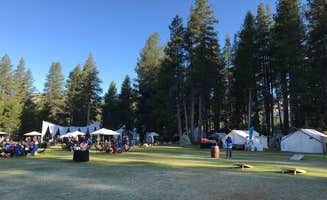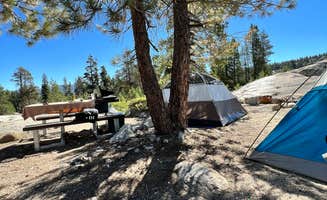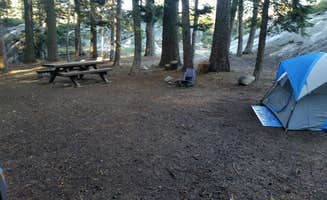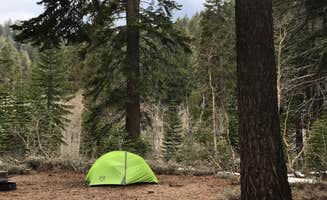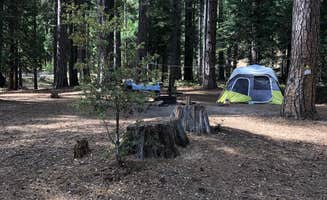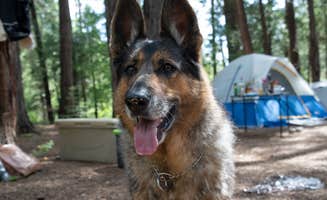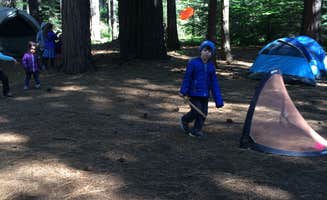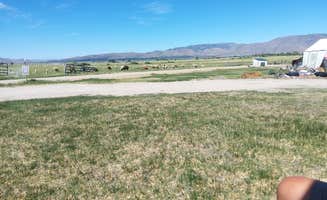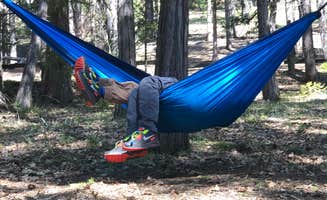Tent camping near Markleeville, California sits at elevations between 5,500 and 8,000 feet, creating distinct alpine camping conditions with significant day-to-night temperature swings. The region receives heavy winter snowfall, restricting access to many sites until late spring, while summer brings mild 70-80°F days and cool 40-50°F nights. Most campgrounds in this eastern Sierra region open from June through September, with peak conditions in July and August.
What to do
Hiking access from camp: Luther Pass Campground provides direct access to the Tahoe Rim Trail. According to one camper, it offers "great access to the TRT. Stayed here the night before getting on the TRT. Very quiet and plenty of sites open" while another noted there's "a creek running right by camp which makes for easy sleeping!"
Fishing nearby: Pacific Valley Campground campers can fish the small creek running through the meadow. One visitor mentioned "there is a beautiful meadow opens up ahead with a small creek running through" while another recommended checking out "Mosquito Lake... just up the road, as well as some nice fishing spots along highway 4 going towards nevada."
Paddle sports: Utica Campgrounds offers unique water-based camping opportunities. A reviewer explained that "We canoed and SUP camped here. You can find beautiful, isolated sites on the islands all around the lake. Great hammock camping!" Another camper advised "load up your boat(s) with gear and paddle out to pretty much any stretch of shoreline to find a camping site."
What campers like
Privacy between sites: At Lovers Leap Campground, sites are nicely spaced. A visitor observed that "While most campsites are on the smaller size, there are a few which can accommodate larger tents." Another appreciated that "those who camp here are courteous and respectful of others and the site."
Natural shade coverage: The tree cover at Bear Valley Dispersed Camping provides relief from summer sun. One camper mentioned "the site itself had a lot of tree cover, shade and probably awesome camping at any other time." Another noted "the most you get close to the top of the mountain, the most curvy the road is, so be prepare."
Stargazing opportunities: Nighttime viewing is exceptional at many Markleeville area sites. A Bear Valley Dispersed camper said it was a "Perfect spot for star gazing!! We arrived when it was dark and had no problem finding a spot! It was open with plenty of spots & we were the only ones!"
What you should know
Fire restrictions vary: Regulations change seasonally and by location. At Kirkwood Campground, fires are not allowed despite the alpine setting. However, Luther Pass permits fires with one visitor noting there are "fire rings and tables" at designated spots.
Cell service is inconsistent: Signal varies dramatically by campground and carrier. Pacific Valley campers report: "Down in the valley there is no service, but you can drive up to the top of the hill if you need to send a message!" At Lovers Leap, visitors found "Good cell reception" throughout the campground.
Trail access differs: Some campgrounds provide direct hiking connections while others require driving. For best tent camping near Markleeville, California with trail access, consider that Luther Pass sits adjacent to "the Big meadow trailhead" while Pacific Valley has "a trail head at the back of the campground."
Tips for camping with families
Look for amenities: Wet Meadows Reservoir requires preparation as it has no facilities. A visitor noted "No amenities so pack it in pack it out applied" and recommended "a high clearance 4x4 vehicle however we did have a Subaru Outback in our group and we made it back there without issue."
Consider noise factors: Luther Pass sits near a highway but remains relatively quiet. One camper warned "Be mindful that some spots are right next to a busy Highway" but another found it "very spacious and dispersed."
Water features: Children often enjoy campgrounds with streams or lakes. Pacific Valley Campground features "a beautiful creek runs through the campground" while Kirkwood Lake provides lake access and "nice hidden away campsites."
Tips from RVers
Site accessibility: Luther Pass has limitations for larger vehicles. One frustrated RVer warned "Holy Christ for the love of god take away the rv tag. There isn't a single spot for an rv, I tried it with my 19' single axle unit and nearly ripped the spare tire off the back the road was so steep."
Leveling challenges: Many Markleeville area campgrounds have uneven terrain. At Desolation Wilderness - Aloha Zone, backpackers report finding "Level areas for tents" but note these require hiking in as "You can hike in for 6 miles each way (12 miles round trip) via the Echo Lakes trail."
Seasonal access: Many roads to tent camping near Markleeville become impassable in winter. Bear Valley campers noted "the paved road disappears and is only dirt road, you can keep driving as far as you want, it is easy to find a good spot to park and set your camp."


